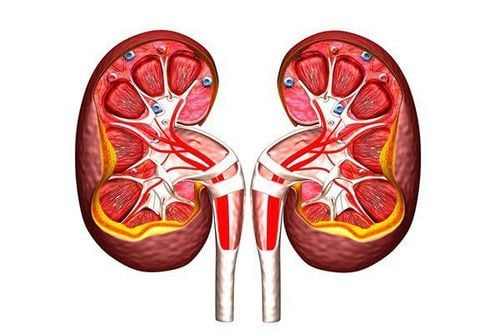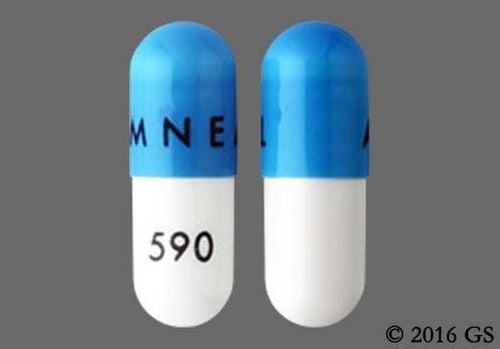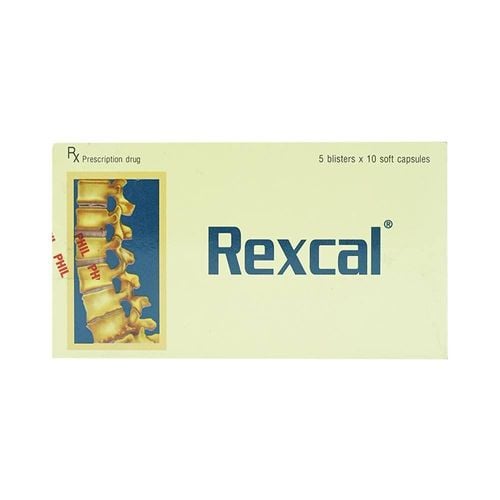This is an automatically translated article.
Currently, the proportion of people with chronic body diseases is increasing rapidly. According to the American Heart Association, chronic kidney disease is considered a risk factor for cardiovascular disease. Besides, calcium metabolism disorders, phosphorus metabolism disorders, secondary hyperparathyroidism also increase the rate of coronary heart disease and mortality from cardiovascular causes in patients with chronic kidney disease.
1.Disorder of calcium metabolism in chronic kidney disease
1.1 The process of metabolizing calcium in the body The adult body contains a total of about 1300g of calcium, of which 99% calcium is involved in bone structure, 1% calcium exists in intracellular fluid and 0.1% calcium in the extracellular fluid.
Calcium is a mineral that is absorbed into the body through the brush in the intestines. About 200mg of calcium is absorbed by the body every day. The kidneys play a role in excreting less calcium to balance the amount of calcium absorbed. In addition, the kidneys also produce calcitriol from vitamin D, which aids in the absorption of calcium from the intestines. Both absorption and excretion of calcium are stimulated by the hormone PTH.
1.2 Disorders of calcium metabolism in chronic kidney disease

Quá trình lọc cầu thận
Disorders of metabolism of calcium, phosphorus, and hormone PTH are characteristic changes in patients with chronic kidney disease. If the blood phosphorus level is increased, it will lead to hypocalcemia and secondary hyperparathyroidism - increased PTH. Disorders of calcium, phosphorus and PTH hormone metabolism in people with chronic kidney disease often appear early, when the glomerular filtration rate is less than 60–80 ml/min/1.73 m2 of skin.
When the glomerular filtration rate is < 60 ml/min/1.73 m2, a decrease in serum calcium concentration will occur. When the concentration of extracellular calcium decreases, it stimulates the parathyroid glands to increase the synthesis of PTH hormone.
Therefore, in patients with chronic kidney disease, the patient will no longer be able to maintain the normal regulation of the hormone PTH on calcium levels, leading to calcium deposition on the artery walls causing calcification. Arterial wall, hardening, decrease or loss of elasticity, narrowing of the aperture. Since then, the patient's arterial system becomes stiff, narrow, and reduces spasm, leading to lack of blood to nourish the target organ.
2. Phosphorus metabolism disorder in chronic kidney disease patients
2.1 Phosphorus metabolism in the body Phosphorus is an important component in many organic compounds, intermediates of metabolic processes, and is the main inorganic component in bones. Phosphorus exists 86% in bones, the remaining 14% exists in the cellular components of the body.
The intestinal absorption of phosphorus is increased when the diet is rich in phosphorus. Total body phosphorus is maintained in balance by the kidneys excreting phosphorus. As more phosphorus is filtered by the kidney, the proximal tubule reduces phosphorus reabsorption and vice versa, so that only 10% of the phosphorus remaining in the filtrate is excreted.
The average blood phosphorus concentration is about 4mg/dl. When blood phosphorus levels are high, the hormone PTH stimulates the excretion of phosphorus into the urine, while the hormone calcitonin regulates the balance of phosphorus in the blood by moving phosphorus from the blood into the bones.
2.2 Disorders of phosphorus metabolism in chronic kidney disease

Thận mạn tính
Phosphorus levels in the blood increase due to many reasons, mainly decreased urinary excretion, when the glomerular filtration rate decreases <40 ml/min/1.73m2, it will lead to retained phosphorus, increasing blood phosphorus, decrease calcium and stimulate PTH secretion.
Blood phosphorus is increased in patients with chronic renal failure and hyperphosphatemia is proportional to the degree of renal failure. Diagnosed with hyperphosphatemia when the phosphorus concentration is >1.45 mmol/l.
When blood phosphorus levels increase, calcium - phosphorus crystals form, which are deposited in soft tissues and in artery walls, causing hardening, which is associated with cardiovascular complications and death in patients. have chronic kidney disease.
3.Notes when treating metabolic disorders in patients with chronic kidney disease
The mortality rate of patients with chronic kidney disease depends on the degree of calcium metabolism disorders, phosphorus metabolism disorders and PTH hormone. In the treatment of chronic kidney disease, in order to reduce the overall mortality rate for patients, it is necessary to control these disorders well: reduce blood phosphorus and maintain blood calcium, control elevated PTH
Pay attention when taking drugs to treat thinning Bone Phosphorus target is in the normal range (0.81-1.45mmol/l) with phosphate-lowering drugs, limiting calcium-containing phosphate-binding drugs, and limiting foods high in phosphorus. The calcium target is within the normal range, avoiding hypercalcemia, especially in hemodialysis patients. Target PTH is in the range of 2-9 times the upper limit of the normal range. Vinmec International General Hospital is a high-quality medical facility in Vietnam with a team of highly qualified medical professionals, well-trained, domestic and foreign, and experienced.
A system of modern and advanced medical equipment, possessing many of the best machines in the world, helping to detect many difficult and dangerous diseases in a short time, supporting the diagnosis and treatment of doctors the most effective. The hospital space is designed according to 5-star hotel standards, giving patients comfort, friendliness and peace of mind.
Please dial HOTLINE for more information or register for an appointment HERE. Download MyVinmec app to make appointments faster and to manage your bookings easily.













